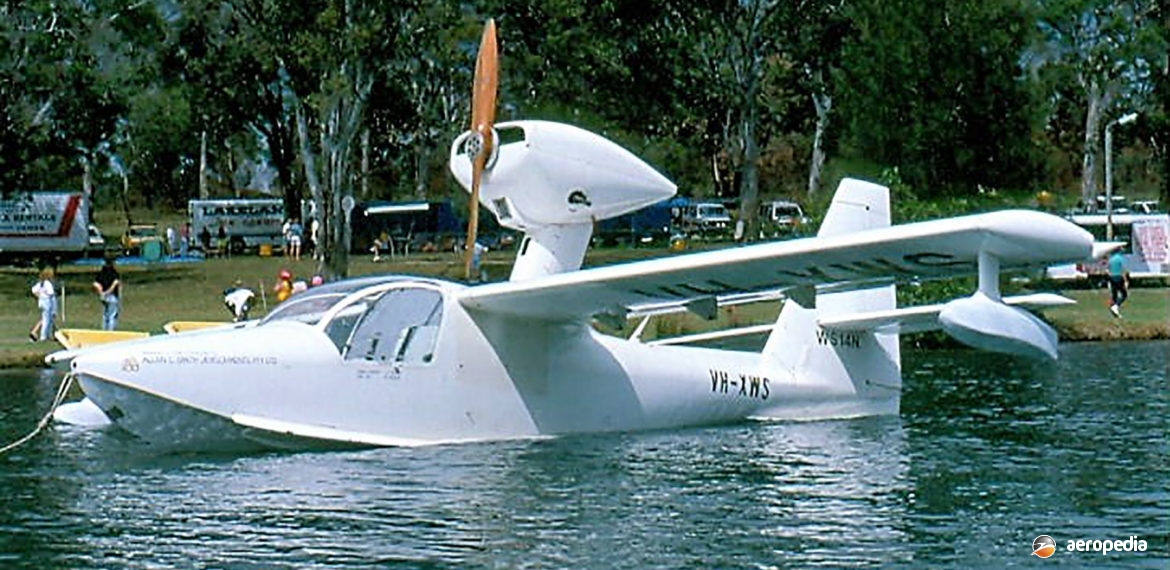Photograph:
Smith FSRW VH-XWS (c/n N105) on Lake Macquarie, at Rathmines, NSW during a fly-in of the Seaplane Pilots Association (David C Eyre)
Country of origin:
Australia
Description:
Two-seat light sport amphibian
Power Plant:
(Prototype)
One 97 kw (130 hp) Continental O-240A four-cylinder horizontally-opposed air-cooled engine
Specifications:
History:
The FSRW, constructed almost entirely of fibreglass, was initially a development project of the Sydney University School of Aeronautical Engineering in 1974. Designed as a two-seat amphibian with a flying-boat hull, the aircraft was intended for amateur construction. However, as it involved what were then fairly new construction methods, progress was slow and many parts had to be made a number of times to find the most economical and satisfactory way of constructing them. German experience in epoxy fibreglass construction of sailplane wings was employed in the wing construction.
A number of new features were included in the design. At the time construction commenced, it was the first flying-boat design to be built almost entirely of fibreglass (although others have since appeared in the amateur built category). It was designed as a short take-off and landing aircraft and was fitted with double-slotted flaps and leading-edge slats. Theoretically it had a take-off run on land of 37 m (120 ft), and a stalling speed of 43 km/h (27 mph). When first built power was provided by a Rolls Royce/Continental O-240A engine driving two wooden Hawker de Havilland-built propellers by VEE-belt drive, the propellers being mounted on two pylons above the wing.
The prototype, known as the FSRW-1, and later registered VH-XWS, was constructed on a property at West Pennant Hills, NSW. The aircraft made its first flight at Schofields, NSW, on 16 March 1983 and was demonstrated to the public shortly thereafter at the Schofields Airshow with well-known Sydney Victa and GAF test pilot, the late Victor Walton, at the controls. On 2 December that year, after a considerable amount of development, it made its first water flight from Pittwater near Palm Beach, NSW.
Further development took place to improve performance, stability, control, and water operation. Two major changes were made to the design. One of these involved the replacement of the all-moving tailplane with a conventional fixed tailplane with elevators mounted high on the fin to give greater water clearance. The second involved replacement of the engine in the fuselage driving the two propellers on pylons and installation of the engine in a single pylon above the fuselage in a configuration similar to the Lake Buccaneer as there was considered to beto much power loss to the propellers under the original arrangement.
Further development continued towards eventual full certification and proposed plans to build and sell kits of components to amateur builders. However, this does not seem to have occurred and in the late 1990s the aircraft was dismantled and placed in storage at Bankstown airport, NSW.

